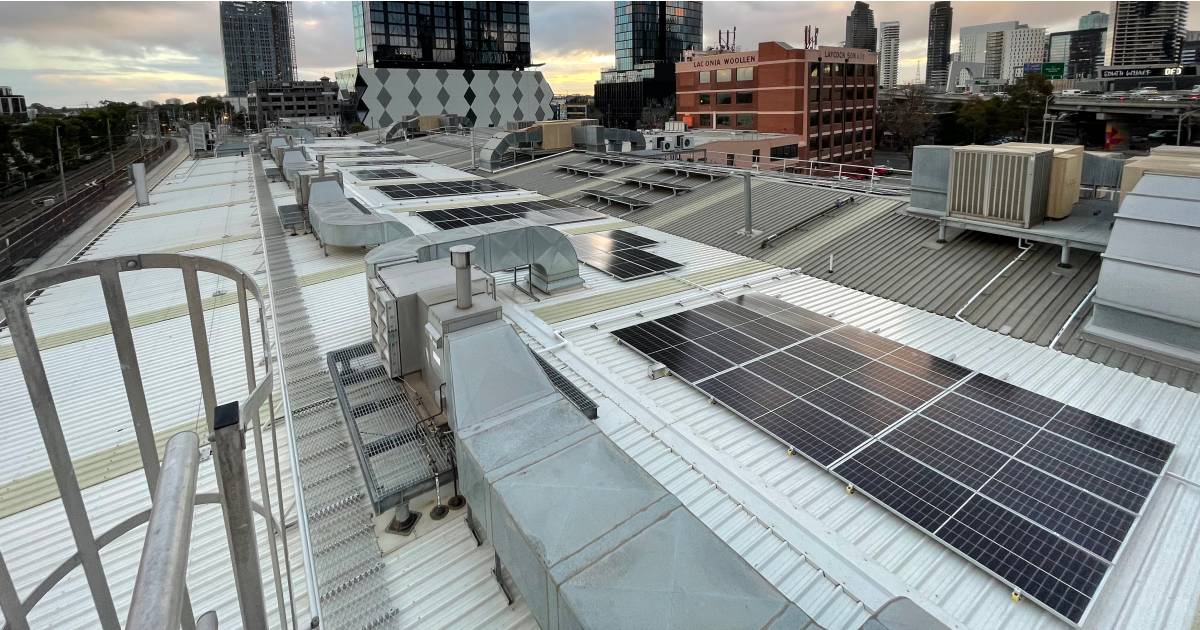
Expanding on the use of solar energy throughout Melbourne’s tram network, seven tram depots are having rooftop solar panels installed.
Melbourne has the largest operational tram network in the world – boasting more than 475 trams, approximately 1,700 tram stops and 250 km of double track.
Back in 2017, the Andrews Government announced it would use solar power to operate Melbourne’s tram network. It supported a tender for new large scale solar farms in regional Victoria, with some of the facilities’ capacity earmarked for the purpose.
Under the Solar Trams Initiative, the Victorian Government purchases and retires around 82,000 MWh in large-scale generation certificates (LGCs) annually associated with Bannerton Solar Park near Robinvale and Numurkah Solar Farm near Shepparton; both of which commenced operations in 2019. This matches 100 per cent of the electricity used by Melbourne’s tram fleet.
Solar Power Closer To Home (Base)
Bringing solar energy generation closer to the point to consumption is a new project that will see a total of seven tram depots having renewables installed on-site. The first installation of solar panels is already complete – close to 100kW of capacity on the rooftop on the Southbank depot; pictured above.
“Working with the Government to install hundreds of solar panels on our depots was a natural next step after the 2019 agreement to offset the power required by all our trams with solar generated power,” said Yarra Trams Chief Executive Officer Julien Dehornoy. “We’re incredibly proud to have solar depots housing our solar trams.”
Collectively, the systems will generate more than 550 megawatt hours of electricity, avoid up to 350 tonnes of emissions and save approximately $370,000 on energy costs each year.
The tram depot solar panel rollout is being funded under the state’s Greener Government Buildings (GGB) Program. This initiative kicked off in 20091 and has supported more than $200 million in energy efficiency and renewable energy projects – including solar installations on a bunch of hospitals.
Other energy related projects at Yarra Trams depots have included removing all fluorescent light fixtures and installing LED lighting to tram stabling and maintenance sheds at Southbank, Glenhuntly, Malvern and Brunswick depots last year. Further LED lighting and skylight upgrades are being carried out this year under GGB. Yarra Trams has also switched 100% of its passenger vehicles to hybrids.
“Tram travel is already one of the most sustainable ways to travel,” said Minister for Public Transport Ben Carroll. “We’re continually looking for opportunities to make our transport networks more sustainable.”
The State Government’s Climate Change Strategy has committed all Victorian government operations to be powered by 100% renewable electricity by 2025.
Related: A Guide To Commercial Solar Power
Footnotes
- Quick GGB history – the program commenced under the Brumby Labor Government in 2009. It was scrapped by the Baillieu/Napthine Coalition Government in 2014, even though it won the Premier’s Award for sustainability from then-Premier Ted Baillieu in 2011. Baillieu resigned as state leader of the Liberal Party (and Premier) in March 2013 and it was under Napthine’s watch the program was axed. GGB was reinstated under the Andrews Labor Government in 2016. ↩

 RSS - Posts
RSS - Posts



Speak Your Mind